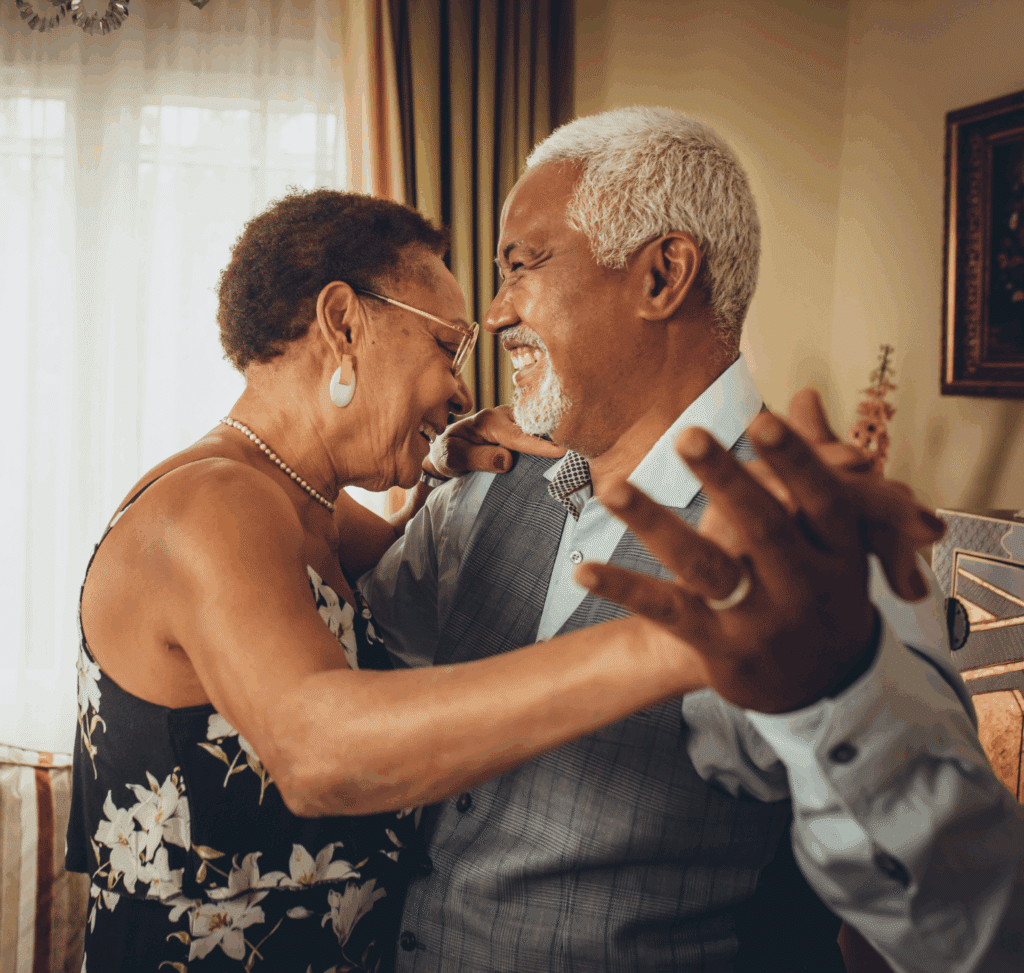Anxious Attachment Style in Adults: How It Affects Relationships and Mental Health

Attachment styles are the emotional templates we form early in life that shape how we connect with others in adulthood. Among the four main attachment styles (secure, avoidant, anxious, and disorganized), anxious attachment is linked to the strongest fear of abandonment.1
People with the anxious attachment style long for closeness and connection, but the moment they get it, they begin to fear it won’t last. Their nervous system is on high alert, a behavior learned from unstable emotional environments in childhood. Fortunately, what’s learned can be unlearned. Professional support is at hand to help people rewrite their templates for relationships.
This page can also help, as it covers:
- What anxious attachment is
- How the anxious style develops
- How anxious attachment affects your mental health and relationships
- Ways to heal from and repair the anxious attachment style

What Is Anxious Attachment Style?
Anxious attachment (also known as “anxious-preoccupied”) is one of the four main adult attachment styles identified in attachment theory. The styles were a psychological framework first introduced by John Bowlby and later expanded by Mary Ainsworth.2
People with an anxious attachment style typically crave deep emotional intimacy but struggle to feel secure in relationships, no matter how much reassurance they receive. For example, they might constantly worry that their partner doesn’t love them, or that they’ll leave.
This insecurity doesn’t come from a place of neediness for the sake of it. It is rooted in an increased sensitivity to relational cues and perceived threats to emotional safety.
Studies show that anxiously attached individuals display increased amygdala activity (the brain’s threat detection center) when faced with signs of social rejection or emotional distance.3
Signs of Anxious Attachment in Adults
People with anxious attachment often find relationships to be emotional roller coasters because their emotional radar is hypersensitive to any sign of disconnection.
Common signs of anxious attachment in adults include:4
- A constant need for reassurance
- Overanalyzing texts, tone, or behavior
- Fear of abandonment
- Clinginess or emotional over-dependence
- Difficulty trusting that love is stable
- Conflict anxiety
- Hyper-awareness of partner’s moods
That said, there are two subtypes of anxious attachment style in adults that show up slightly differently. The above signs are common to both.
Anxious Ambivalent vs. Anxious-Preoccupied Attachment Traits
Though both anxious ambivalent and anxious-preoccupied subtypes fall under the umbrella of anxious attachment, they show up differently in behavior.
Anxious-ambivalent attachment is viewed as the earlier expression of anxious attachment. Therefore, it’s more commonly associated with childhood. Children with this pattern tend to experience emotional confusion and unpredictability in their responses.
Anxious ambivalent traits include:
- Emotional intensity paired with unpredictability
- `Intense need for proximity
- Difficulty calming down
- Suspicion or testing behaviors
Anxious-preoccupied attachment is most commonly associated with the adult expression of anxious attachment. It is expressed as over-involvement in relationships and a low sense of self-worth paired with a high view of others.5
Anxious-preoccupied attachment traits include:
- Persistent worry about being rejected or abandoned
- Over-focusing on the partner’s needs while neglecting your own
- People-pleasing tendencies to “secure” love
- Difficulty being alone
- Identity fusion (defining your self-worth through the lens of the relationship). If the relationship is good, you feel good. If it’s unstable, your self-esteem tanks.
What Causes an Anxious Attachment Style in Adults?
The foundation of anxious attachment is laid in childhood, during what psychologists call the “attachment phase.” This is when a child’s brain is developing its internal working model of how relationships function.6 This model becomes a blueprint for how the child expects love, safety, and emotional closeness to work as they grow up.
Inconsistent caregiving is one of the most well-documented roots of anxious attachment. When a caregiver is inconsistently responsive, sometimes attentive and loving, other times emotionally unavailable, the child learns that connection is unpredictable.7
Emotional misattunement, where a child’s inner world is not acknowledged and validated (for example, brushing them off when they express fear or sadness), teaches them that their feelings don’t matter. Over time, they internalize the belief that to be loved, they have to suppress their needs.
Other times, the child is pulled too closely into the caregiver’s emotional world. They may be expected to emotionally support the parent and act like the adult in the relationship. The child learns that love is earned by attuning to others’ needs while ignoring their own.
Also, early exposure to divorce, frequent separations, loss of a caregiver, or conflict-filled homes disrupt a child’s sense of relational safety. When the emotional environment is tense, the attachment system becomes overactive as a survival strategy.
Finally, if a child doesn’t experience reparative relationships as they develop, they risk continuing such patterns of beliefs and behaviors into adulthood.
Impact of Anxious Attachment on Relationships
Attachment anxiety in relationships shows up as clinginess, overthinking, and emotional over-dependence.4 For instance, a delayed text can quickly cause panic. A quiet mood from a partner feels like rejection. Anxiously attached people crave constant reassurance, but it can be difficult for a partner to provide constant validation.
What’s worse is that the more they seek closeness, the more their partner feels overwhelmed or pulled away, which feeds into their fear of abandonment. They may also struggle with jealousy and compare themselves to others.
In friendships or family relationships, anxious attachment shows up as people-pleasing or difficulty setting boundaries. People with this style often also constantly second-guess whether they’re being too much or not enough.
Ironically, anxious people often choose partners on the opposite end of the attachment spectrum; people with avoidant tendencies, who value space and emotional independence. This type of relationship risks ending up in a push-pull cycle, leaving both sides feeling misunderstood.
How Does Anxious Attachment Style Affect Your Mental Health?
Anxious attachment impacts how your brain and body function every single day because your nervous system lives in a near-constant state of hyperarousal.8 Over time, this can take a serious toll on your mental health in the following ways:
- Chronic anxiety: You might feel a sense of worry even when nothing’s wrong. The fear of being left or unloved keeps your mind racing and your body tense. Research shows anxious attachment is significantly associated with higher baseline cortisol (stress hormone) levels.9
- Depression and emotional burnout: When your efforts to feel secure don’t seem to work, you may begin to feel hopeless, emotionally drained, and deeply sad. For instance, a 2016 study found a strong link between anxious attachment and increased risk of depressive symptoms.10
- Low self-esteem: If your self-worth has always been tied to external validation, it’s easy to believe you’re only lovable when you’re agreeable and emotionally “easy.” Over time, this can erode your sense of self.
- Overthinking: You may replay conversations endlessly and obsess over whether someone is upset with you. Such cognitive looping, called “attachment-related rumination,” has been shown to increase vulnerability to generalized anxiety disorder (GAD) and relationship-related OCD symptoms.11
- Sleep disturbances and physical health symptoms: Studies also link insecure attachment styles with insomnia, headaches, gastrointestinal symptoms, and immune system suppression due to unrelenting stress.
Can You Change Your Anxious Attachment Style?
If you have an anxious attachment style, you may be wondering, Is this just how I am? Am I stuck like this forever?
The answer is a reassuring no.
Attachment styles are not fixed traits; they’re adaptive patterns your brain develops early on to keep you emotionally safe. But just as these patterns were learned, they can be unlearned and reshaped.
Research shows that with consistent corrective emotional experiences, people can move from insecure to secure attachment. Psychologists call it “earned secure attachment.” This means, even if you grew up with inconsistency and emotional unpredictability, you can still build a new, healthy internal model of love. Change doesn’t happen overnight, and it can cause emotional discomfort, but it is possible.
How to Stop Anxious Attachment Behavior
Healing from anxious attachment begins with building self-awareness. Often, the fear or anxiety you feel in relationships is triggered not just by the present moment, but by unresolved emotional wounds from your past.
A good first step is to identify your triggers. The sudden wave of panic when someone doesn’t text back or the tightness in your chest when your partner changes plans are clues that your attachment system has been activated. During such moments, pause, breathe, and try to name what you’re feeling.
Also, grounding exercises, journaling, or engaging in meaningful solo activities can help you regulate without relying solely on external reassurance.
Once you’re more regulated, focus on healthy communication. Use “I” statements to express vulnerability without blaming your partner. For example: “I feel anxious when I don’t hear from you, because of past experiences.”
Also, take the time to acknowledge positive behaviors from others. Noticing and expressing appreciation when someone shows care can reinforce healthy relational dynamics and help you feel more secure.
Therapy for Anxious Attachment
Emotion-focused therapy (EFT) is an evidence-based, research-supported approach to treating anxious personality styles in adults. It was developed by Dr. Sue Johnson and is built on the idea that emotional bonding and safety are essential for human well-being.12
EFT helps you explore the core emotional experiences that drive your attachment patterns. The therapist helps you slow down and unpack your emotional reactions in the moment. But they don’t pathologize these responses. Instead, they guide you with compassion to the source of those feelings, such as your unmet needs for safety and reassurance.
EFT has three stages:
- Stage 1 is the de-escalation phase, where you identify your attachment-related fears and behaviors so that you can de-escalate reactive cycles.
- Stage 2 requires restructuring bonding experiences, which helps you access primary emotions like fear, sadness, or shame that get masked by protest behaviors. You learn to express those needs vulnerably.
- Stage 3 is the consolidation phase. Once emotional safety is strengthened, you can begin to integrate new patterns of relating to others and build a stronger internal model of secure attachment.
To put it simply, studies show EFT is effective in reducing attachment-related distress and improving relational satisfaction.
Get Professional Help for Anxious Attachment at Mission Connection
If you’re ready to grow out of your anxious attachment style and build stronger, more secure relationships, we at Mission Connection can help you with EFT.
EFT offers a path toward lasting change by making room for your emotions instead of silencing them. Our experienced therapists provide a safe and supportive space where you can explore these patterns and heal from relational wounds.
It’s never too late to shift the way you relate to others and yourself. Call us today or get started online to begin healing from anxious attachment via EFT today.

References
- National Collaborating Centre for Mental Health (UK). (2015, November). Children’s attachment: Attachment in children and young people who are adopted from care, in care or at high risk of going into care (NICE Guideline No. 26). National Institute for Health and Care Excellence (NICE). https://www.ncbi.nlm.nih.gov/books/NBK356196/
- Bretherton, I. (1992). The Origins of Attachment Theory: John Bowlby and Mary Ainsworth. Developmental Psychology, 28(5), 759–775. https://psychology.psy.sunysb.edu/attachment/online/inge_origins%20DP1992.pdf
- Vrtička, P., Andersson, F., Grandjean, D., Sander, D., & Vuilleumier, P. (2008). Individual Attachment Style Modulates Human Amygdala and Striatum Activation during Social Appraisal. PLoS ONE, 3(8), e2868. https://doi.org/10.1371/journal.pone.0002868
- Simpson, J. A., & Rholes, W. S. (2017). Adult attachment, stress, and romantic relationships. Current Opinion in Psychology, 13, 19–24. https://doi.org/10.1016/j.copsyc.2016.04.006
- Nasiriavanaki, Z., Barbour, T., Farabaugh, A. H., Fava, M., Holmes, A. J., Tootell, R. B. H., & Holt, D. J. (2021). Anxious attachment is associated with heightened responsivity of a parietofrontal cortical network that monitors peri-personal space. NeuroImage: Clinical, 30, 102585. https://doi.org/10.1016/j.nicl.2021.102585
- Braungart-Rieker, J. M., Zentall, S., Lickenbrock, D. M., Ekas, N. V., Oshio, T., & Planalp, E. (2014). Attachment in the making: Mother and father sensitivity and infants’ responses during the Still-Face Paradigm. Journal of Experimental Child Psychology, 125(125), 63–84. https://doi.org/10.1016/j.jecp.2014.02.007
- Doyle, C., & Cicchetti, D. (2017). From the Cradle to the Grave: The Effect of Adverse Caregiving Environments on Attachment and Relationships Throughout the Lifespan. Clinical Psychology: Science and Practice, 24(2), 203–217. https://doi.org/10.1111/cpsp.12192
- Mikulincer, M., & Shaver, P. R. (2012). An Attachment Perspective on Psychopathology. World Psychiatry, 11(1), 11–15.
- Kidd, T., Hamer, M., & Steptoe, A. (2013). Adult attachment style and cortisol responses across the day in older adults. Psychophysiology, 50(9), 841–847. https://doi.org/10.1111/psyp.12075
- Kidd, T., Poole, L., Ronaldson, A., Leigh, E., Jahangiri, M., & Steptoe, A. (2016). Attachment anxiety predicts depression and anxiety symptoms following coronary artery bypass graft surgery. British Journal of Health Psychology, 21(4), 796–811. https://doi.org/10.1111/bjhp.12191
- Dar, K. A., & Iqbal, N. (2014). Worry and Rumination in Generalized Anxiety Disorder and Obsessive Compulsive Disorder. The Journal of Psychology, 149(8), 866–880. https://doi.org/10.1080/00223980.2014.986430
- Greenman, P. S., & Johnson, S. M. (2021). Emotionally Focused Therapy (EFT): Attachment, Connection, and Health. Current Opinion in Psychology, 43(1). https://doi.org/10.1016/j.copsyc.2021.06.015






